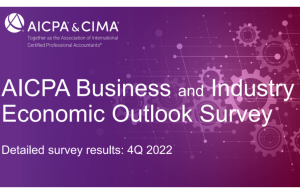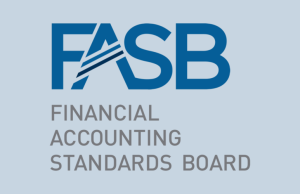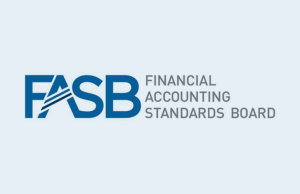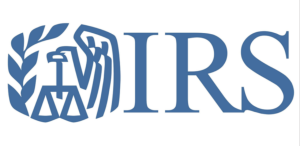State charity regulators have been increasing scrutiny of nonprofits’ financial statements, the Internal Revenue Service (IRS) Form 990s and solicitation materials in a number of key ways. These areas of growing scrutiny include nonprofits’ allocation of joint costs and valuation of non-cash donations (a.k.a. gifts in kind or GIK).
Many state regulators believe that charities are improperly using these accounting principles to hide their fundraising costs by unfairly infl ating their program expenses.
Several states, including New York, Michigan and California, have brought enforcement actions alleging that as a result of an incorrect allocation of joint costs, the organization has, in effect, made materially false statements in the financial documents they submit as part of their required state reporting. Similar false statement allegations have been made, most recently, by the state of California, in connection with GIK valuations. This is despite the organization’s submission of audited financial statements (which include joint cost allocation and GIK disclosures) verified by an independent certified public accountant (CPA) to meet generally accepted accounting principles (GAAP).
Some state charity offices recently alleged that organizations are unfairly stating their expense ratios in their charitable solicitation materials for the purpose of skewing the percentage of program versus fundraising expenses. These actions have largely focused on the use of incorrect joint cost allocations and/or the inclusion of non-cash contributions as part of the total contributions received.
Consider, for example, the popular use of the program vs fundraising/administration included in many direct mail solicitations. The state regulators claim that the usage of these ratios misrepresents the size or complexity of a charity’s business operations, which constitutes a deceptive fund-raising practice and violates state charitable solicitation laws.
The states’ concerns about joint cost allocations and GIK valuation are not always without justification. Nonprofit employees are often tasked with applying these complex principles to allocate millions of dollars in expenses without a full understanding of the rules, and their allocations are often not closely reviewed or questioned during the independent audit review process. The rules underlying these activities are set forth in GAAP and they are highly technical and complex.
Under the joint cost allocation rules, the activities in which organizations are permitted to allocate expenses associated with a fundraising activity as program expense are limited to those where the organization includes a “call to action” within a fundraising campaign.
To illustrate, an activity in which joint costs can be allocated is a direct mail letter sent to a prospective donor that asks for money but also seeks to engage the individual in fulfilling the charity’s mission through a “call to action” that helps fulfill the organization’s mission. An anti-smoking organization, for example, might send a mailing that asks for a donation, but also includes various tips on how to quit smoking.
By applying the principles set forth in GAAP, an organization can allocate the cost of producing the mailing between fundraising, management, and program expenses.
Three frequent mistakes nonprofits make include:
- Allocating when the solicitation has no call to action (simply describing the organization’s mission or charitable programs is not a call to action);
- Over allocating to program when the materials do not support the allocation; and,
- Selecting the audience based on ability or likelihood to contribute, rather than based on the audience’s reasonable potential to use the call to action or ability to carry out the call to action. Finally, a threshold consideration is whether the payment terms contained in the underlying fundraising contract are percentage-based. If so, allocation is not permitted.
“Recent inquiries by state regulators shave focused on claims of overvaluation of GIK donations, failure to ensure the donations were used in furtherance of mission, and lack of actual title or discretion over use of the donations (thus inflating revenue and program expense).
The other area where nonprofits are feeling heightened scrutiny is in organizations’ acceptance, use, and accounting for noncash contributions. Issues of concern include use of donated goods in compliance with an organization’s mission, valuation of the donated goods, recognition of revenue and expenses and financial statement disclosures.

Leaders at organizations who want to accept and use GIK donations must be cognizant of the following:
- All donations must be used in furtherance of their tax-exempt mission;
- Before acceptance, all donations should be screened for cultural, social and programmatic appropriateness;
- Donations should be properly valued at fair value as of the date of the donation;
- Receipt and transfer of donations must be properly documented;
- Organizations should accept donations only if they have a critical role in procuring the donation and/or in distributing it to the final beneficiary and each recipient must have title and discretion over the donation’s use;
- Fees charged should be limited to actual expenses related to processing the donation; and,
- Financial statements should disclose all required information.
Recent inquiries by state regulators have focused on claims of overvaluation of GIK donations, failure to ensure the donations were used in furtherance of mission, and lack of actual title or discretion over use of the donations (thus inflating revenue and program expense).
One of the challenges for organizations is that the regulators’ interpretation of GAAP does not, in all cases, align with published guidance interpreting GAAP and there no judicial precedence resolving this problem. Courts have not ruled on the issue of the deceptive solicitations.
Failure to follow the rules precisely when allocating joint costs or accounting for GIK donations can lead to inaccurate reporting on financial statements, which can lead to an enforcement action by a state regulator. A collateral problem can arise when an organization uses these numbers to promote their efficiency ratios in their solicitation materials.
While there have not yet been any judicial decisions confirming the regulators’ positions on these issues, by taking the time to understand and properly apply these accounting principles, organizations can reduce their risk of being the target of regulatory scrutiny.











